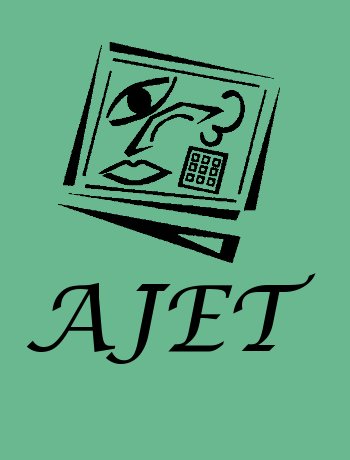
Problem based learning in the design of a multimedia project
ARTICLE
Iain McAlpine, Rex Clements
Australasian Journal of Educational Technology Volume 17, Number 2, ISSN 0814-673X Publisher: Australasian Society for Computers in Learning in Tertiary Education
Abstract
This article examines problem based learning (PBL) as a basis for the design of interactive multimedia. To be effective, interactive multimedia should be stimulating and challenging, while providing students with a learning environment in which they can carry out investigations and have access to resources and tools for finding and manipulating data. PBL is an ideal approach to instructional design for multimedia, as it provides a scenario of problem presentation, investigation, resolution and presentation that can form the basis for the multimedia activities. Carried out effectively, this approach can enable high level learning, as the students are required to use the higher order mental processes of analysis, comparison and contrast, hypothesis and synthesis in order to propose a solution to the problem. Students need to take an active rather than a passive approach to learning when using this method. The theoretical basis for this approach is discussed. A case study of higher education course materials in grazing management is used to illustrate the way the PBL approach is used in the instructional design of the materials. Evaluation data from trials with students is included to illustrate the effectiveness of the materials for teaching and learning.
Citation
McAlpine, I., Clements, R. & Clements, R. (2001). Problem based learning in the design of a multimedia project. Australasian Journal of Educational Technology, 17(2),. Australasian Society for Computers in Learning in Tertiary Education. Retrieved August 12, 2024 from https://www.learntechlib.org/p/44440/.
References
View References & Citations Map- Biggs, J. (1999). What the student does: Teaching for enhanced learning. Higher Education Research and Development, 18(1), 57-75.
- Boud, D. & Feletti, G.I. (1997). The Challenge of Problem-Based Learning, 2nd Ed, London: Kogan Page.
- De Grave, W.S., Boshuizen, H.P.A., & Schmidt, H.G. (1996). Problem based learning: Cognitive and metacognitive processes during problem analysis. Instructional Science, 24, 321-341.
- Herrington, J., & Herrington, A. (1998). Authentic assessment and multimedia: How university students respond to a model of authentic assessment. Higher Education Research and Development, 17(3), 305-322.
- Hoffmann, B., & Ritchie, D. (1997). Using multimedia to overcome the problems with problem-based learning. Instructional Science, 25, 97-115.
- Jonassen, D.H. & Reeves, T.C. (1996) Learning with technology: Using computers as cognitive tools. In D.H. Jonassen (Ed), Handbook of Research on Educational Communications and Technology. New York: Simon& Schuster Macmillan: 693719.
- Jonassen, D.H. (1997). Instructional design models for well-structured and illstructured problem solving learning outcomes. Educational Technology Research and Development, 45(1), 65-94.
- Keppell, M., Elliott, K., & Harris, P. (1998). Problem based learning and multimedia: Innovation for improved learning of medical concepts. Proceedings ASCILITE ’98, The University of Wollongong, 14-16 December. [verified Sept 2000] http://www.ascilite.org.au/conferences/wollongong98/ascpapers98.html
- Koschmann, T., Kelson, A.C., Feltovich, P.J. & Barrows, H.S. (1996). Computersupported problem-based learning: A principled approach to the use of computers in collaborative learning. In T. Koschmann (Ed), CSCL: Theory and Practice of an Emerging Paradigm. Mahwah, NJ: Lawrence Erlbaum. Australian Journal of Educational Technology, 2001, 17(2)
- McAlpine, I. (2000). Collaborative learning online. Distance Education, 21(1), 66-80.
- McAlpine, I. & Jackson, J. (2000). Implementing Online Delivery: A Study of Change Management. Fellowship Report for the Australian National Training Authority (ANTA). Brisbane: ANTA. Http://www.anta.gov.au/fellow/
- Morris, R. & Hayes, C. (1997). Small groupwork: Are group assignments a legitimate form of assessment? In Pospisil, R. And Wilcoxson, L. (Eds), Learning Through Teaching, p229-233. Proceedings of the 6th Annual Teaching Learning
- Reeves, T.C. & Okey, J.R. (1996). Alternative Assessment for Constructivist Learning Environments. In B.G. Wilson (Ed), Constructivist Learning Environments, Englewood Cliffs, NJ: Educational Technology Publications.
- Reeves, T.C., Laffey, J.M., & Marlino, M.R. (1997). Using technology as cognitive tools: Research and praxis. Proceedings ASCILITE ‘97, Curtin University, December 7-10. [verified 26 Jan 1999] http://www.curtin.edu.au/conference/ASCILITE97/papers/Reeves/Reeves.html
- Reeves, T.C. & Laffey, J.M. (1999). Design, assessment, and evaluation of a problem-based learning environment in undergraduate engineering. Higher Education Research and Development, 18(2), 219-232.
- Shanley, D.B., & Kelly, M. (1994). Why Problem-Based Learning? http://www.odont.lu.se/projects/ADEE/shanley.html [verified 19 Aug 1998].
These references have been extracted automatically and may have some errors. Signed in users can suggest corrections to these mistakes.
Suggest Corrections to References